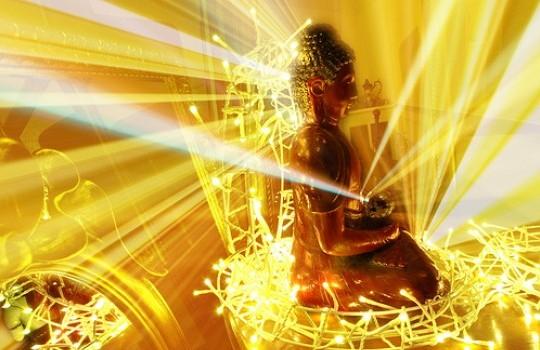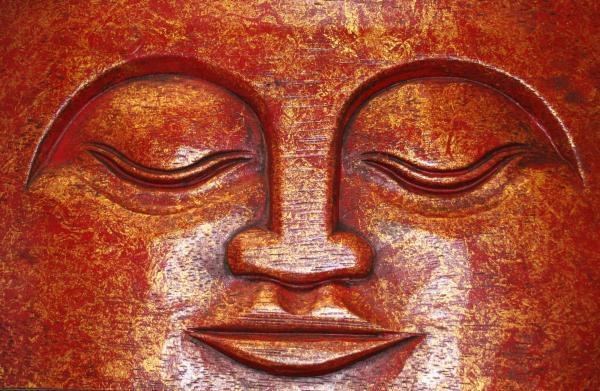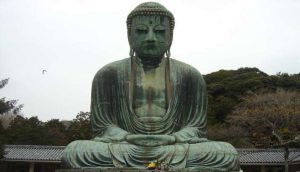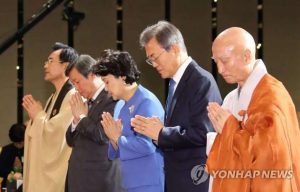Undoubtedly this is an enormous topic, and acknowledging how it has been vastly covered in various philosophies of both the West and the East I will attempt to neither summarize its historical treatments nor have the audacity to declare a valuable contribution to the topic. Instead I’ll share my own reflections on it with appropriate references to the existing body of thought on the topic.
Consider the word hello – it seems that we have the capacity to capture it by our consciousness all at once. We do not break it up into its components of individual sounds, although that’s not to say that we couldn’t. But since this word is not infinitely short is seems that our consciousness can reside – all at once – in an interval of time. It seems that the conscious moment is stretched out in time and thus is composed simultaneously of the past, present and future. Some philosophers have equated consciousness with memory – but any conscious experience doesn’t appear to be only restricted to the past, since we may be anticipating some future object, whatever it may be. On that note – I find it interesting that the idea of consciousness being conditioned by an object of its focus has been discovered independently by both the Buddhist thinkers and the Phenomenologists (school of thought initiated by the German philosopher Edmund Husserl focused on a systematic analysis of consciousness and its objects). Likewise the classifications of those objects of consciousness spanning from sensory perception and emotion to thoughts and intentions, and their awareness (mindfulness) is shared by Buddhism and Phenomenology. Martin Heddeiger concluded from the phenomenological analysis of consciousness the identity of consciousness and its object – a result effectively equivalent to the experience of sam?dhi in the Hinduistic tradition, as exemplified by the words of the guru Nisargadatta Maharaj:
When this consciousness, this conscious presence, merges in itself, the state of ‘Samadhi’ ensues. It is the conceptual feeling that I exist that disappears and merges into the beingness itself. So this conscious presence also gets merged into that knowledge, that beingness – that is ‘Samadhi’.
As most readers would already know sam?dhi has a different meaning in Buddhism – as right concentration intended to lead to insight it still depends on an object of focus i.e. it retains the subject-object dichotomy. Once sam?dhi – a well-disciplined and still mind – is attained, object consciousness is eventually abandoned in the higher jhanas as they are successively less formal and object oriented. In that sense this subject-object (apparently) necessary relation for consciousness eventually dissolves in the higher jhanas.
But not to veer away from the topic – this property of consciousness had to be mentioned to provide a necessary background to our short investigation of the conscious moment – the topic at hand. The above reflections on the all at once presence in our consciousness of the word hello, or any other object endowed with a temporal dimension, suggest a certain holding-on of our consciousness to them. In this sense consciousness can’t be said to be restricted to any given moment – it seems it can span time, depending on the nature of the apprehended object and its temporal breadth.
So we’ve established that the temporal span and location of consciousness can be seen as dependent on the nature of the object that serves as its content. If we generalize objects as any phenomena present to the mind and senses, and reflect on the practice of mindfulness as a passive and clear noticing of those objects then it will become obvious that in principle our consciousness could latch onto successively finer (temporarily) objects. Now, conceptual thinking has a way of grouping finer phenomena into complex structures – “the assignment”, “a meeting”, “the weekend” etc – which in themselves are objects. Certainly those higher order objects are composed of a multitude of finer phenomena, yet our mind conditioned to conceptual thinking often gets lost in this realm of conceptual constructs, and effectively becomes detached from immediate experience of the finer phenomena. It’s as if concepts hijack our consciousness away from the present and immediate moment. This is not always true of course, as there are a multitude of tasks that require a refined concentration of the present moment. However the tendency is there, and for the purposes of this article let’s say that immediate concentration (awareness and mindfulness of immediate objects) help us anchor our consciousness to the moment. With enough practice of mindfulness we’ll start noticing the finer building blocks of the more gross phenomena and the refinement of such focus will bring insight.
As any of these four techniques of mindfulness are persistently pursued, they break through thenormal illusions of continuity and reasonableness that sustain cognitive and perceptual processes. The mind begins to witness the random and discrete units of stuff from which a reality is continually being structured.
(Daniel Coleman, “The Buddha on Meditation and Higher States of Consciousness”, Harvard University)
Suddenly the gross phenomena (often conceptually constructed and hence perceived as objects in themselves) dissolve – their objective status disappears, and is revealed as agglomerations of finer phenomena. Although this is not the main goal in Buddhism, this process could possibly be carried out indefinitely (if we assume a continuous nature to the stream of consciousness), toward increasingly finer elements constituting any phenomenon i.e. object of consciousness. Nagarjuna seems to believe in an arbitrary degree of refinement of the conscious moment, which would then imply that what Daniel Coleman is referring to in the quote above is just some particular chosen stage of a potentially infinite refinement.
Just as a moment has an end, so it must have
A beginning and a middle.
Also the beginning, middle, and end
Are to be analyzed like the moment.
(Nagarjuna)
One could argue that whether this process is indefinite or not depends on the true nature of reality. That is to say it is an empirical question (even if we extend the definition of empirical to entail subjective experience – see Toward a Synthesis of Insight). Again maybe the continuum is just an idea (a fantasy!) which has no grounding in this world, as some mathematicians and philosophers believe (notably Gregory Chaitin).
So the question “what is the moment of consciousness like?” boils down to the following question – is reality’s temporal resolution finite or infinite? This is important since as long as we make consciousness depended on objects (mind or sense objects) – in other words the stuff that reality can offer, it would follow that consciousness depends on their (temporal) resolution. So either we reach rock bottom – the limit of the resolution of reality and observe how our “stream” of consciousness is constructed from those fundamental moments as Daniel Coleman reports (I don’t know if he has meditated himself or only bases his conclusion on accounts of Buddhist monks) and we in fact can witness them, or alternatively reality has infinite resolution and the process of refinement goes forever in which case we’ll never experience a moment, and it has to be then concluded that it is only a conceptual fantasy.














